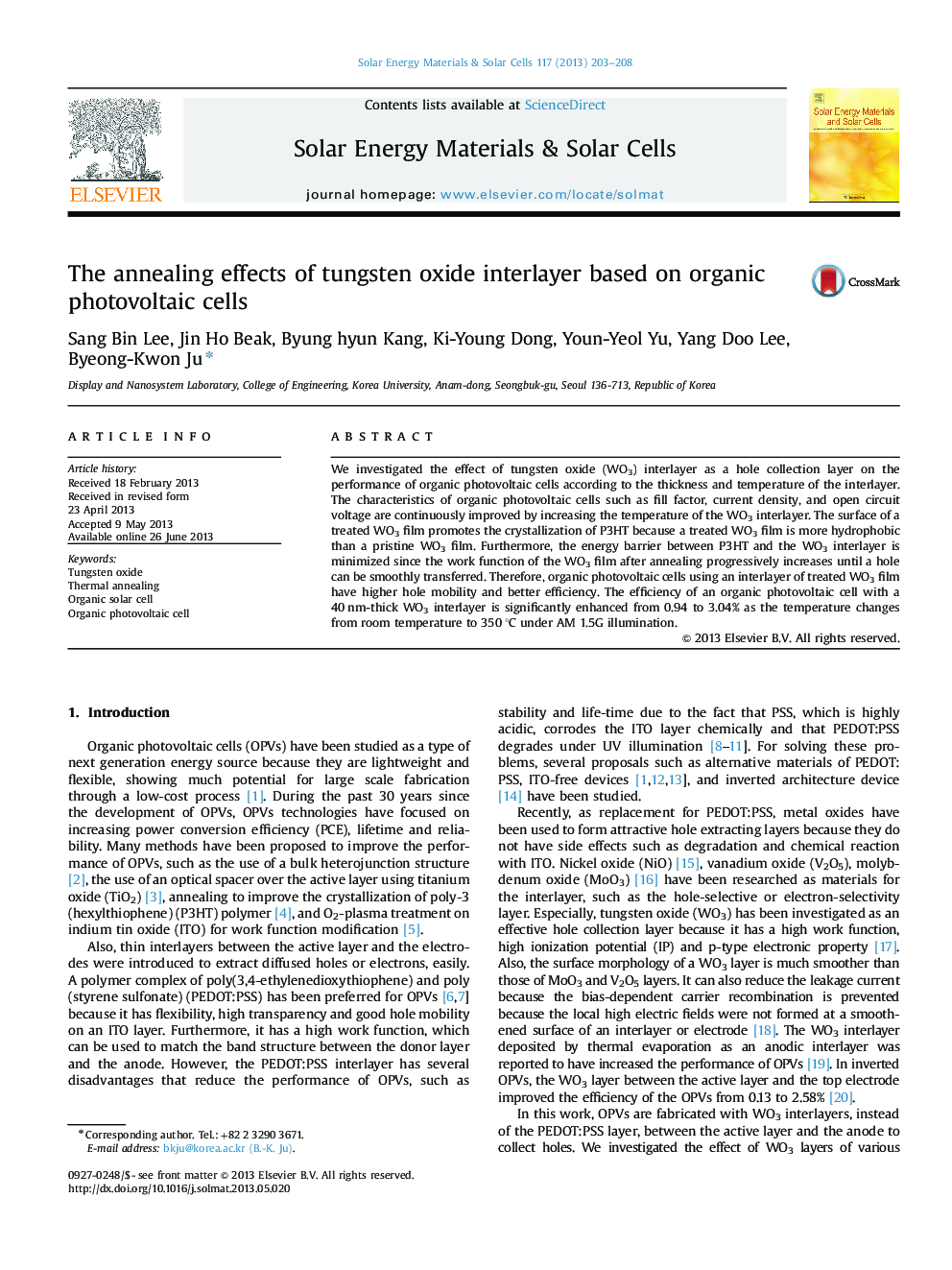| Article ID | Journal | Published Year | Pages | File Type |
|---|---|---|---|---|
| 6536199 | Solar Energy Materials and Solar Cells | 2013 | 6 Pages |
Abstract
We investigated the effect of tungsten oxide (WO3) interlayer as a hole collection layer on the performance of organic photovoltaic cells according to the thickness and temperature of the interlayer. The characteristics of organic photovoltaic cells such as fill factor, current density, and open circuit voltage are continuously improved by increasing the temperature of the WO3 interlayer. The surface of a treated WO3 film promotes the crystallization of P3HT because a treated WO3 film is more hydrophobic than a pristine WO3 film. Furthermore, the energy barrier between P3HT and the WO3 interlayer is minimized since the work function of the WO3 film after annealing progressively increases until a hole can be smoothly transferred. Therefore, organic photovoltaic cells using an interlayer of treated WO3 film have higher hole mobility and better efficiency. The efficiency of an organic photovoltaic cell with a 40 nm-thick WO3 interlayer is significantly enhanced from 0.94 to 3.04% as the temperature changes from room temperature to 350 °C under AM 1.5G illumination.
Related Topics
Physical Sciences and Engineering
Chemical Engineering
Catalysis
Authors
Sang Bin Lee, Jin Ho Beak, Byung hyun Kang, Ki-Young Dong, Youn-Yeol Yu, Yang Doo Lee, Byeong-Kwon Ju,
